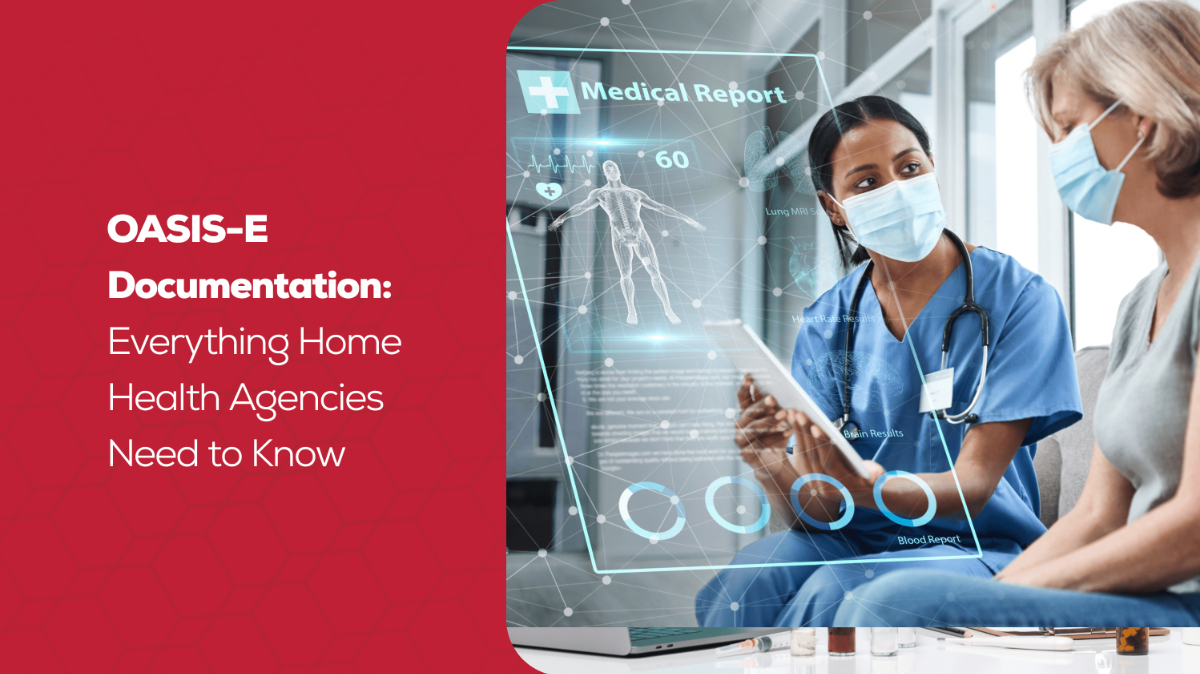

Accuracy in documentation is more than a regulatory mandate in home health. It affects the way patients are cared for, how clinicians interact with each other, and how agencies prove quality. Moving to the OASIS-E (Outcome and Assessment Information Set, version E) framework is one of the most important changes in this field over the last decade.
OASIS-E represents a shift in how patient outcomes and assessments are reported. The revision is consistent with the IMPACT Act of 2014. It tasked the Centers for Medicare & Medicaid Services (CMS) with developing standardized data elements in all post-acute settings. The objective is straightforward: have home health, skilled nursing, inpatient rehab, and long-term care providers document and report on progress using similar language and measurements.
By creating this shared data structure, CMS hopes to improve continuity of care and enable measurement of patient outcomes across all settings. For home health agencies, it means that documentation must now serve compliance and clinical purposes alike, closing the loop between reporting and actual patient care.
OASIS data drives nearly every fiscal and quality measure that is relevant to home health. It directly feeds into PDGM (Patient-Driven Groupings Model) payment, influences performance scores within the Home Health Value-Based Purchasing (HHVBP) model, and informs public reporting via Care Compare.
One sole erroneous entry in OASIS is enough to cause reimbursement discrepancies or prompt Additional Documentation Requests (ADRs). The Office of Inspector General (OIG) continues to identify documentation errors as one of the most common explanations for Medicare overpayments.
Under OASIS-E, clinical staff are expected to report primarily, raising the bar for interdisciplinary coordination. QA teams, coding experts, and administrators need to collaborate in order to validate that documentation accurately represents actual patient conditions, meets clinical evidence, and is representative of regulatory compliance.
Key Changes from OASIS-D to OASIS-E
The transition from OASIS-D to OASIS-E provides notable functional and structural enhancements. These modifications are intended to increase interoperability, precision, and elimination of duplication:
Every transition supports a larger vision: documentation that supports patient care, rather than mere compliance.
OASIS-E has transformed the way clinical teams work together. Interdisciplinary care planning is now coordinated by integrated, organized data. If assessments accurately reflect cognitive function, mobility, or symptom progression, care teams can intervene earlier and better.
For example, functional decline detected by GG scoring or depressive symptoms from PHQ-9 can initiate follow-up visits, therapy modulations, or physician notifications. The resultant interventions not only enhance quality outcomes but also allow agencies to document measurable quality improvement, a fundamental imperative under the HHVBP model.
Additionally, uniform OASIS-E data permits benchmarking against CMS-published national averages. Comparative transparency aids agencies in measuring their performance and improving care models to compete within the market.
OASIS-E documentation has a direct effect on PDGM payment accuracy. Clinical grouping, functional scoring, and comorbidity adjustments, all of which are used to determine reimbursement, are driven by each patient's assessment. Minor inaccuracy in coding or timing can lead to rejected claims, delayed reimbursement, or audit findings.
The CMS Program Integrity Manual underscores documentation accuracy as a high audit priority for the next few years. Home health agencies that establish ongoing QA and internal audits can abate risk considerably while staying compliant with CMS and accrediting organizations.
In this regard, OASIS-E is more than mere data entry. It codifies how agencies establish credibility in a growingly regulated and outcome-driven system.
Implementation of OASIS-E necessitates a formal process to workflow design. Effective agencies make documentation accuracy an integral part of each phase of patient care.
When clinical care and compliance follow systematic and transparent documentation workflows, they march together instead of running parallel.
Compliance is not met with checklists; it is sustained with culture. In top-performing home health agencies, clinicians view documentation as an integral part of delivering care, rather than an afterthought.
Implementing internal audit dashboards, monitoring documentation timeliness, and enforcing accountability at all levels creates consistency. With time, this method converts compliance from a reactive entity to a proactive asset that protects both patients and the organization.
Common Challenges and Solutions
In spite of training and automation, the agencies still face recurrent problems under OASIS-E:
These issues can be avoided through cross-functional teamwork, stringent QA cycles, and third-party peer reviews. Companies that continually review their documentation processes have greater accuracy and improved preparedness for surveys or ADRs.
Artificial intelligence-driven automation tools can help identify missing or inconsistent data fields. Technology cannot fully compensate for clinical judgment.
A balanced model, where automation does initial checks and experienced reviewers cross-check for clinical validity, yields the best outcomes. Human judgment brings interpretation, empathy, and judgment, while automation provides speed and uniformity.
In this hybrid model, agencies realize efficiency without sacrificing accuracy.
CMS rolled out OASIS-E1 in January 2025, introducing refinements to data elements and removing redundancies based on feedback from early OASIS-E implementation. The revision enhances the precision of data collection and streamlines interoperability across care settings.
To adapt successfully, home health agencies have focused on:
The next phase for agencies is not adoption but optimization, leveraging OASIS-E1 data for advanced quality tracking, risk adjustment accuracy, and improved care coordination.
In home health, documentation isn’t a requirement; it is evidence of care. OASIS-E introduces order, yet the culture of accountability provides the guarantee that structure is followed through. With each assessment reflecting accurately the patient trajectory, quality scores rise, audits are predictable, and care delivery becomes uniform.
For home health agencies, OASIS-E mastery is more than sufficient to satisfy CMS requirements. It is crafting a sound foundation for future expansion, clear reporting, and quantifiable excellence.